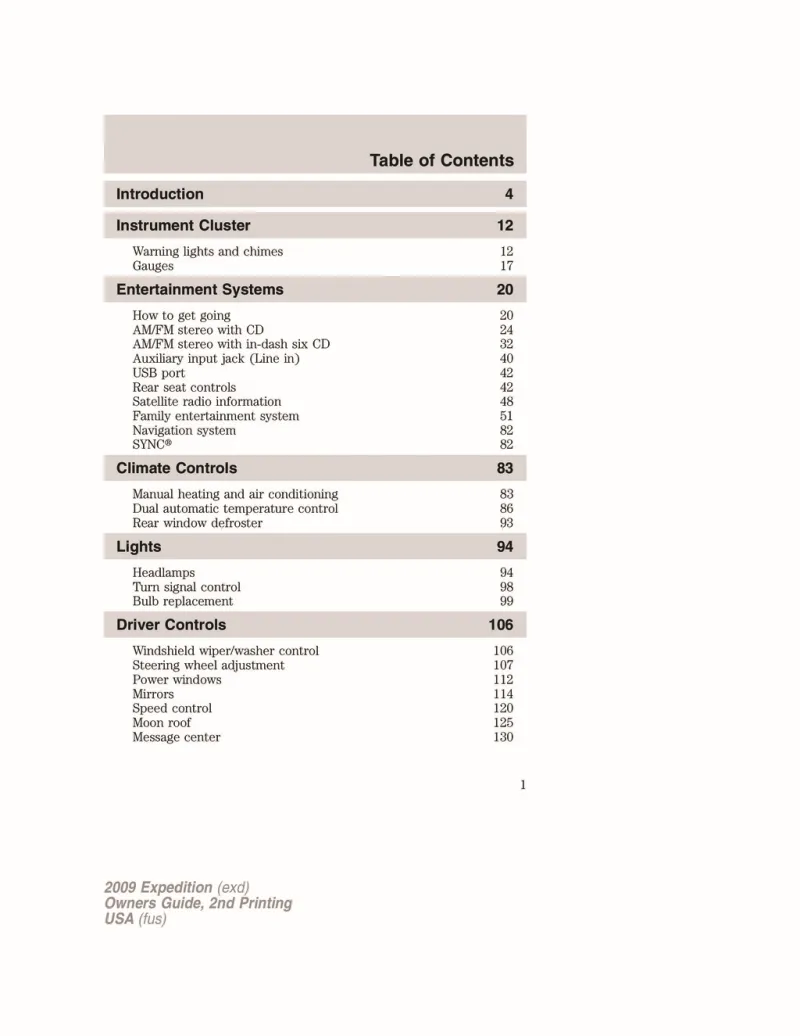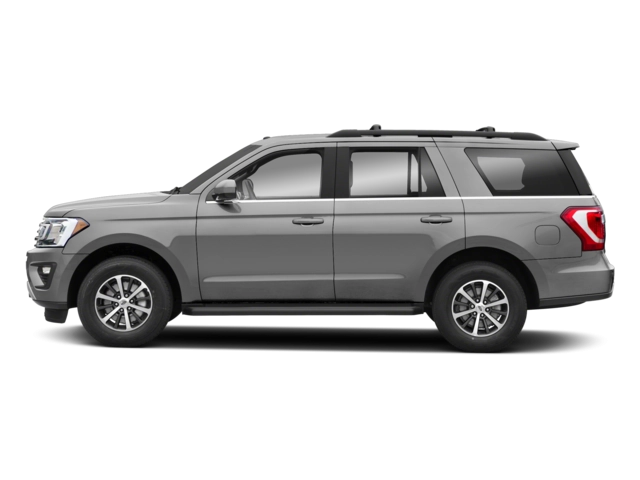2009 Ford Expedition Owner's Manual

Table of Contents
2009 Ford Expedition Overview
Introduction
The 2009 Ford Expedition is a full-size SUV that epitomizes power, space, and versatility, making it an ideal choice for families and adventurers alike. Combining rugged performance with advanced technology and comfort, this model offers the perfect balance for those who demand durability without compromising on luxury. With a bold exterior design and spacious interior, the 2009 Expedition is ready to tackle any road or terrain with confidence.
Powertrains
The 2009 Ford Expedition boasts a robust powertrain featuring a 5.4-liter V8 engine that produces an impressive 300 horsepower and 365 lb-ft of torque. This powerhouse is paired with a smooth six-speed automatic transmission that ensures efficient power delivery, whether you're navigating city streets or cruising on the highway. For those who need enhanced traction, the Expedition offers an optional all-wheel-drive system, providing peace of mind in any driving conditions.
Trims
Features
This SUV is loaded with features designed to enhance the driving experience. Standard amenities include a user-friendly audio system with available satellite radio, a power-adjustable driver's seat, and dual-zone climate control. Higher trims also offer luxury upgrades such as leather upholstery, a rear-seat entertainment system, and navigation capabilities, ensuring everyone enjoys the ride in style and comfort.
Owner's Manual
User manual download
The Ford Expedition owner manual for the 2009 model year is to be found in PDF downloadable format on this page. The owner manual for the model year 2009 is free and in English, but the repair manuals are usually not easy to get and may cost more.
Manual Questions
Fill the form below and someone will help you!

